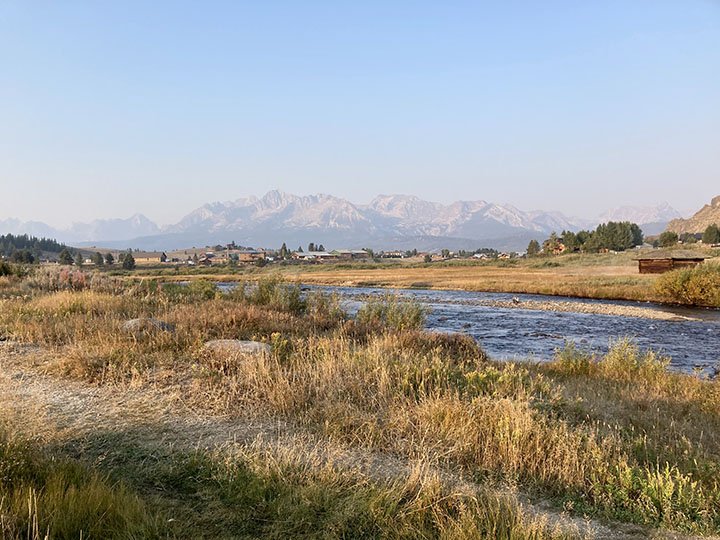Reframing Water Use in an Endless Drought Era

A dry landscape in the foothills of smoky Stanley, Idaho in September. © Tess McEnroe for IRU
Drought, by its very definition, is an anomaly. A promise that this too shall pass. However, we must accept that this aridity is our new water era. We can no longer claim that we are in a prolonged period of drought, that suddenly the halcyon days of deep snowpacks, lasting into July are the norm. These shortsighted and maladaptive methods for managing our water leave our health and our ecosystems vulnerable.
This means an entirely new way of thinking about our water. It means restructuring our power supply so as not to depend on drought-vulnerable hydropower projects. It means reevaluating water-rights that were issued in a wetter climate. It means adapting our lifestyles to meet this scarcity – perhaps we don’t need millions of large bluegrass lawns that need to be watered 3-4 times per week. It means managing our river systems to provide ecological integrity and wildfire resiliency.
This means an entirely new way of thinking about our water. It means restructuring our power supply so as not to depend on drought-vulnerable hydropower projects.
Despite a snowpack that is approaching 100% of normal in most parts of the state and nearly 80% in the driest parts, over 75% of the state still faces conditions of moderate to extreme drought, according to the U.S. Drought Monitor’s website. This would still be the case if we had 100% of normal snowpack for all regions. We tend to think of drought as having a beginning, middle, and an end, but as this has the potential to be enduring, we must no longer think of this as an aberration, but accept this new climate reality. Even if we were to have full snowpack totals every single year, our climate is hotter, evaporation is more pervasive, and our water supply doesn’t meet the ends it once did.
Extracting groundwater, building new dams, and creating new reservoirs are the solutions proposed by many to combat water scarcity, but rather just give the illusion of control. While they might provide temporary relief, they exacerbate a problem. This is no longer a state of emergency or a crisis. This is the reality we must adapt to, including reevaluating whether centuries-old land management policies still serve the needs of this reality.
The importance of our river systems grows increasingly prominent each year. Our focus needs to be protecting the integrity of our river systems. Priority one is keeping our rivers clean and free-running. Water truly is the greatest driving force in nature.


